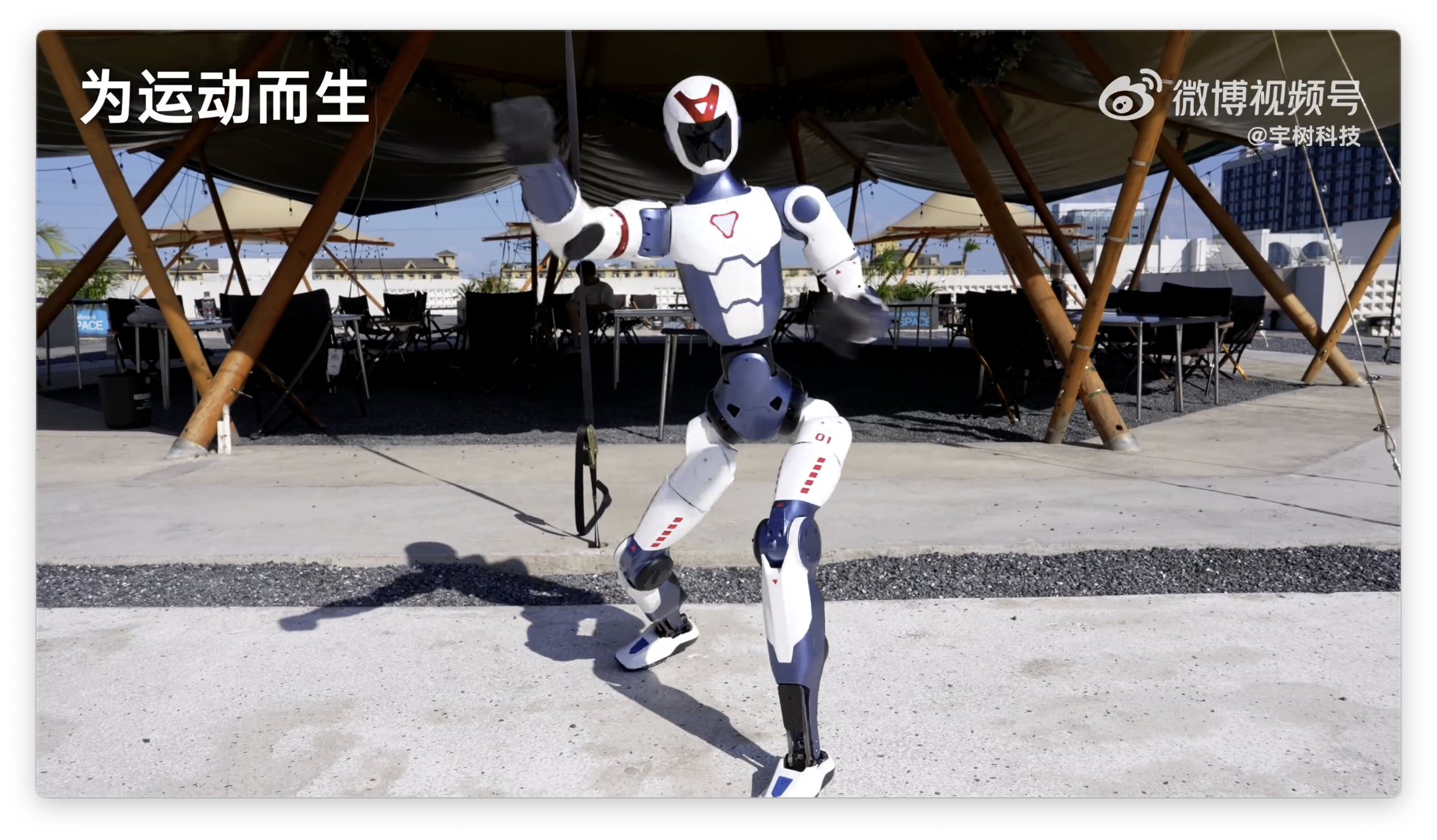R1 Arrives at Just RMB 39,900! Unitree Disrupts the Market, Bringing the Redmi Moment to Humanoid Robots
![]() 07/28 2025
07/28 2025
![]() 665
665
Is a robot that doesn't perform tasks worth RMB 40,000? Is this a bargain or an exorbitant price?
Humanoid robots have never lacked ambition or moments of grandeur, but in reality, most remain confined to laboratories, exhibition halls, or stages. Even when they enter factories, it's more of a novelty than a necessity. However, Unitree is genuinely bringing humanoid robots into everyday life.
On July 25, just before the World Artificial Intelligence Conference (WAIC), Unitree Technology unveiled its third humanoid robot, the Unitree R1. Priced at just RMB 39,900, this robot seems to have brought previous industry visions closer to reality. But don't rush to call it a "bargain-basement" model; this robot is somewhat "difficult to categorize" in many people's eyes.
What does RMB 39,900 signify? It's cheaper than a Boston Dynamics robot dog and even some industrial arms used in universities. Yet, the Unitree R1 is a humanoid robot that can run, box, do splits, and get up quickly. Just like Redmi lowered the entry barrier for smartphones in the past, Unitree has lowered the price of humanoid robots to "the cheapest of the cheap."
Moreover, it integrates multi-modal large models for voice and image recognition.
According to Unitree's official video demonstration, the core selling point of R1 is undoubtedly its "athletic ability." It can perform handstands, rolls, and boxing combinations, and even run downhill. These are not simple preset paths for servo motors but natural movements based on dynamic stability control and real-time feedback algorithms. This is precisely the core technology that Unitree has continuously accumulated in its previous quadruped robots: athletic ability.

Photo/Unitree
Unitree defines R1 as an "intelligent companion" and clearly states that it is a platform-level product "born for movement." Structurally, R1 has 26 degrees of freedom, including complete humanoid structures such as bipeds, arms, hands, waist, and head, with an overall weight of only about 25kg. Although it doesn't have complex hand structures for fine manipulation, its demonstrated body flexibility far exceeds most industrial/service humanoid platforms.
From the current official video, R1's stability seems inferior to that of the "second brother" G1, priced at RMB 99,000. To maintain body stability, it requires a lot of "jittering," giving a sense of almost falling but not quite.
As for Unitree's emphasis on "intelligent companions," it's not well demonstrated in the release video. However, according to the introduction, R1 is equipped with multi-modal AI capabilities, supporting voice recognition and image recognition. Referring to G1 and H1, it should also support initial "companion-style" interactions such as following people and mimicking actions. This type of interaction may not seem impressive at present, but considering the price of the hardware platform, it is already a very aggressive attempt.
So, the question arises: Is a robot that can't carry water or clean worth RMB 39,900? Is it cheap or expensive?

Photo/Unitree
The key lies in who it is sold to. In reality, R1 is not directly targeted at ordinary consumers but rather provides a highly potential development platform: giving AI developers a "body" with powerful athletic ability, providing an "interactive teaching aid" for educational scenarios, and giving gadget enthusiasts a "physical pet" to tinker with.
At least for now, it's not a "tool person" capable of completing tasks, but it may become a touchstone on the eve of the popularization of humanoid robots in the future. Compared to Tesla's Optimus priced at "less than USD 20,000," the significance of R1 may lie in allowing more people to participate in the development and training of the next generation of robots.
For many, R1 may not be "practical" enough, but it has already crossed the psychological threshold of being "out of reach." So, is this a "high-end toy" that can be played with and learned from? Or is it a "tipping point for robot popularization" standing at the cusp of the industry? This still needs to be answered by the market and time.
If the RMB 39,900 Unitree R1 is a stunning debut, then what truly deserves looking back on is Unitree's technological path - a unique evolutionary path for humanoid robots forged in a direction that is almost "anti-mainstream."
Unitree Technology is not a newcomer. From the earliest Laikago to Aliengo, Go1, and last year's B2, Unitree has virtually pushed the limits of "legged dynamics control" and "stable running algorithms" among domestic manufacturers, even globally. At the same time, there is extreme cost control.
This strategy has also been extended to the field of humanoid robots. In 2023, Unitree first released the humanoid robot H1, followed by the G1 targeted at the mid-to-high-end scientific research market. With its excellent athletic performance, superior balancing algorithms, and much lower price than similar foreign products, it quickly deployed in universities, exhibition halls, and experimental institutions. What truly made Unitree "go viral" was its clear and stubborn path choice - prioritizing movement over functionality.
While most people are still debating whether humanoid robots can wash dishes or carry water, Unitree repeatedly emphasizes that robots must first move well before discussing work.

Photo/Unitree
Whether a humanoid robot can work is a concern for everyone. After all, even if it can do backflips, imitate dancing, and perform impressive sweeping kicks, if it can't help you carry boxes, clean, or care for the elderly, then the line between it and a pet dog or even an advanced toy becomes blurred.
However, although R1 is called an "intelligent companion," it lacks complex grasping abilities in its hands, does not integrate large load modules, and does not demonstrate any stable operation processes emphasized by industrial or service robots. Instead, it presents a flexible body, strong interactivity, and a clear "human-oriented" affinity.
Unitree is not in a hurry to have robots wash vegetables in the kitchen. It is more like creating a development machine that "everyone wants to tinker with." This desire and sense of participation are its biggest distinguishing features from other manufacturers. Unitree does not shy away from this but embraces it actively.

Photo/Unitree
From another perspective, as AI is endowing humanoid robots with a "cognitive brain," Unitree has chosen to prioritize creating a "flexible body" for them. This "body-first" strategy has also influenced Unitree's entire supply chain and product definition path. Compared to other manufacturers that purchase servos and controller components in large quantities, Unitree independently develops most of its key modules, possesses a complete hardware control system, and reduces costs through software and hardware integration.
This is actually a very pragmatic strategy.
From a technical maturity perspective, there are still multiple bottlenecks for humanoid robots to perform complex industrial or service tasks: perception, reasoning, hand precision, safety and stability, environmental adaptability... Any absence may lead to failure. Compared to industrial robots that already have mature "non-humanoid" structural solutions, the true advantage of the humanoid structure lies more in facing environments built around "humans," such as schools, exhibition halls, homes, and retail terminals.
Therefore, Unitree has chosen a pace of "starting with companionship and teaching, then gradually expanding functionality." According to publicly available information, Unitree has won bids for multiple projects with China Mobile, Tongji University, the China Science and Technology Museum, among others, most of which are for display, education, and interaction rather than task execution.

Photo/Google
This is not "avoiding the difficult and taking the easy way out" but a realistic choice. The humanoid robot industry is still in the "infrastructure construction stage," where the establishment of ecosystems, platforms, and development environments is more important than any single task. Releasing a robot platform with controllable costs, open functionality, and excellent athletic performance at this time can not only attract the participation of universities and research institutions but also potentially provide a training base for the integration of AI large models and robots.
Furthermore, R1 may be playing the role of an "early evangelist for the robot ecosystem." This is similar to smartphone platforms a decade ago, where before the application ecosystem matured, the most important thing was not shipments but getting more people to start developing apps and doing adaptations.
Today, Unitree is providing a low-threshold robot "body" platform - the more developers who are willing to join it, the more tasks it will be capable of in the future.
After the release of R1, many people's first reaction was: How can it be so cheap? The second question was: How will other manufacturers respond?
This may be one of Unitree's core strategies: entering the market with extreme cost-effectiveness and quickly building walls with technological advantages. This approach is somewhat similar to how Xiaomi defined cost-effective smartphones or how DJI broke through the consumer drone market - using technological dividends to gain a first-mover advantage in the market. China has natural advantages for developing such hardware platforms: engineering talent, manufacturing base, cost control capabilities, supply chain integration speed, etc.
However, this path is not without risks. On the one hand, low prices mean meager hardware profits, with business models relying on subsequent development services and software ecosystems; on the other hand, companies that are the first to open up the market often also expose their shortcomings the most easily: such as unstable control, difficult after-sales, insufficient ecosystem follow-up, etc.
This also raises a bigger question - can Unitree become the "Android platform" for humanoid robots? What about other robot companies? The key lies in who can first set up universal interfaces, attract developers, precipitate applications, and ultimately form a positive cycle. This not only involves industrial design or hardware manufacturing capabilities but also requires an understanding of platform ecosystems and long-term operational capabilities.
As the world re-bets on the robot race, Tesla, Zhiyuan, Figure, Unitree... all have opportunities. However, which door will this key ultimately open? Will it be a golden path to a market worth hundreds of billions, or will it be an early-opened window ushering in a long wait? Perhaps we will have to wait for another "blockbuster application" to arrive before we can find out.
Unitree humanoid robot, robot AI, embodied intelligence
Source: Lei Technology
Images in this article are from: 123RF Licensed Stock Library Source: Lei Technology








